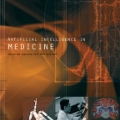Prior foveated rendering methods often suffer from a limitation where the shading load escalates with increasing display resolution, leading to decreased efficiency, particularly when dealing with retinal-level resolutions. To tackle this challenge, we begin with the essence of the human visual system (HVS) perception and present visual acuity-consistent foveated rendering (VaFR), aiming to achieve exceptional rendering performance at retinal-level resolutions. Specifically, we propose a method with a novel log-polar mapping function derived from the human visual acuity model, which accommodates the natural bandwidth of the visual system. This mapping function and its associated shading rate guarantee a consistent output of rendering information, regardless of variations in the display resolution of the VR HMD. Consequently, our VaFR outperforms alternative methods, improving rendering speed while preserving perceptual visual quality, particularly when operating at retinal resolutions. We validate our approach using both the rasterization and ray-casting rendering pipelines. We also validate our approach using different binocular rendering strategies for HMD devices. In diverse testing scenarios, our approach delivers better perceptual visual quality than prior foveated rendering while achieving an impressive speedup of 6.5$\times$-9.29$\times$ for deferred rendering of 3D scenarios and an even more powerful speedup of 10.4$\times$-16.4$\times$ for ray-casting at retinal resolution. Additionally, our approach significantly enhances the rendering performance of binocular 8K path tracing, achieving smooth frame rates.
翻译:暂无翻译


